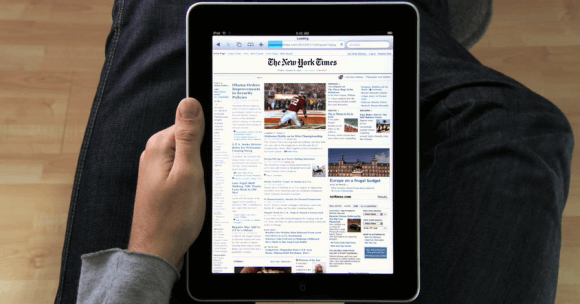With huge exams, all-night homework sessions, 8 a.m. lectures, dorm drama, and coming home to an apartment full of dudes gaming in the living room and other dudes blasting Gloria Estefan in your kitchen on a Tuesday night (or is that just me?), it can sometimes be difficult to immerse yourself in the “real world” of current events and news while you’re in college. Especially when it’s hard enough to find time in your week to do laundry.
But college is a time to learn about issues—past and present—and to acquire different analytical tools that allow you to apply your knowledge to the world around you. Essentially, staying on top of the news is pretty important. As a journalism student, I found myself out of the loop on important local, national, and international issues. I also found that once I put in a bit of initial effort, it wasn’t that difficult to keep myself updated with what’s going on in our world. Here are a few helpful tips so you can do the same:
1. Incorporate news into your social media.

If you’re a college student, you probably consistently use at least one form of social media (because how else are we going to procrastinate?). Whether it’s Facebook, Twitter, or Tumblr, news organizations have a large presence in a lot of social media. Use this to your advantage—you don’t need to go anywhere new to receive your news. This is especially easy if you have a smartphone. Follow various news organizations on Twitter, and read their updates when you have a few spare moments. Retweet articles you find interesting or important. Even if you’re only scrolling through the headlines in between classes or while waiting for your coffee, you are still getting an idea of what’s going on in the world today. You can even set aside time later to read further into anything you find interesting.
2. Get smartphone news apps.

A ridiculous amount of students have smartphones (a fact I am reminded of constantly because I do not). If you have a smartphone (or an iTouch or Tablet), download your favorite news publication’s app. You’re already on your iPhone or Droid all the time, so adding a news application will make it easier for you to check up on the news as part of your daily routine. And they’re often free! The New York Times and the Washington Post both have great, easy to use applications. Explore to see which ones you like best and get your news while you’re on the go.
3. Set your homepage to a news site.

Instead of seeing your Facebook newsfeed every time you go online, try making your homepage the Washington Post or even the website of your school’s own newspaper. That way, the day’s important events will be the first thing you see when you go online. Sometimes the hardest thing about keeping up with the news is forgetting to make it part of your day-to-day life. Seeing the “front page” of the news as your home page every day will help you get into the habit of reading the news. You can even try using more fun and “non-conventional” news sites such as BuzzFeed or the Huffington Post.
4. Take advantage of on-campus TV channels

Many schools provide their student residence halls with cable. If you live on campus and have a TV, use it to watch the news a few times a week. Cut back on the Netflix, and watch a few segments on what is going on. It’s probably the “easiest” way to acquire news—you just have to watch or listen. It’s a great way to be productive while also spending half an hour or so relaxing after a long day of classes or getting ready in the morning.
5. Be old-fashioned with a newspaper.

Yes, newspapers cost money, and why pay for the news when you can usually get it for free online? However, there’s a good chance that your college provides a selection of free newspapers daily. Take advantage of this opportunity and grab a hard copy of the paper once or twice a week. It’s relaxing to sit down and read the news in a more traditional way (without getting distracted by a celebrity tweet or your friends’ snapchats). In my experience, it’s the perfect thing to do when you have weird break in your school schedule—not short enough to just walk to your next class, but not long enough to do anything productive study-wise.
Photos from usatodayeducate.com, uk.reuters.com, bgr.com, blogspot.com, adelaidenow.com.au and hackcollege.com



















